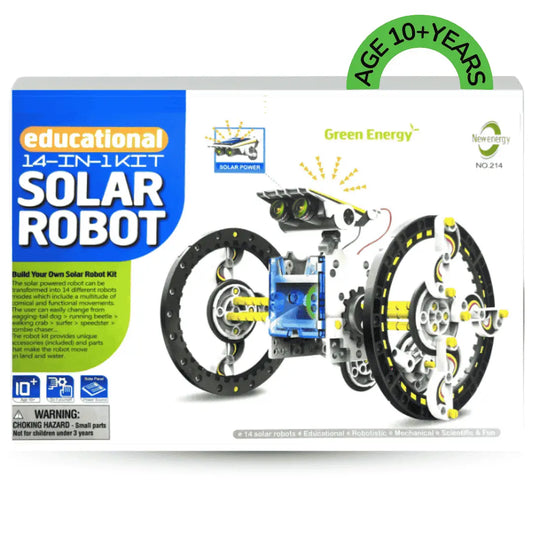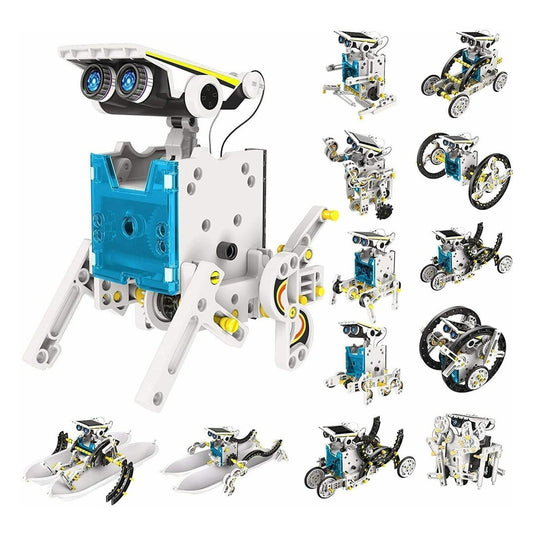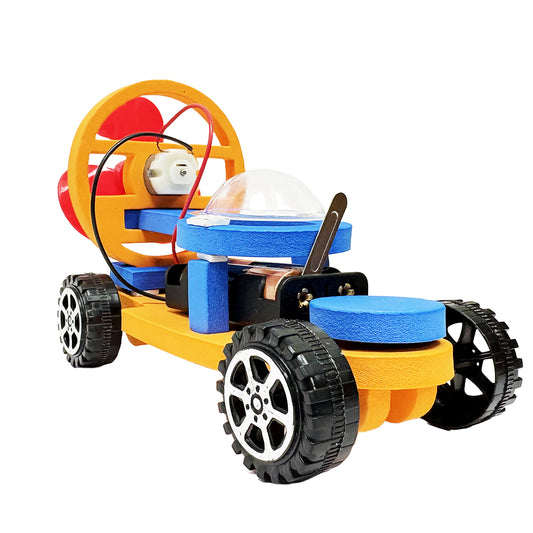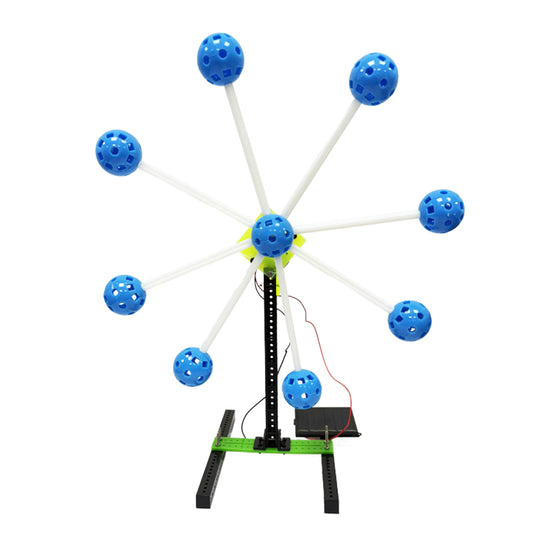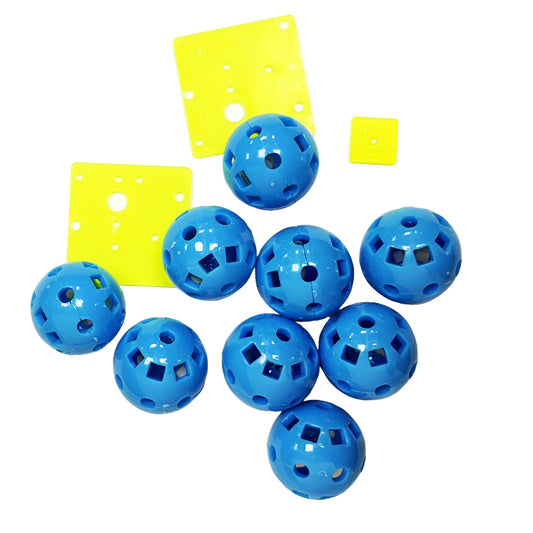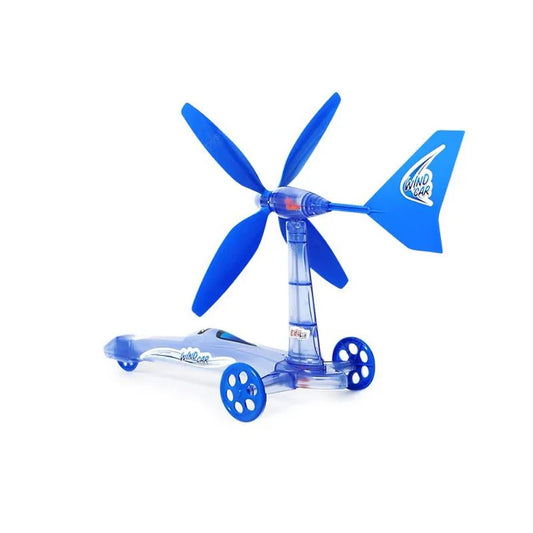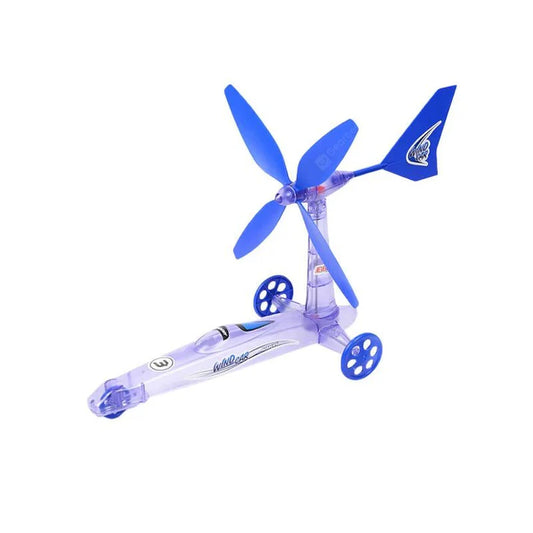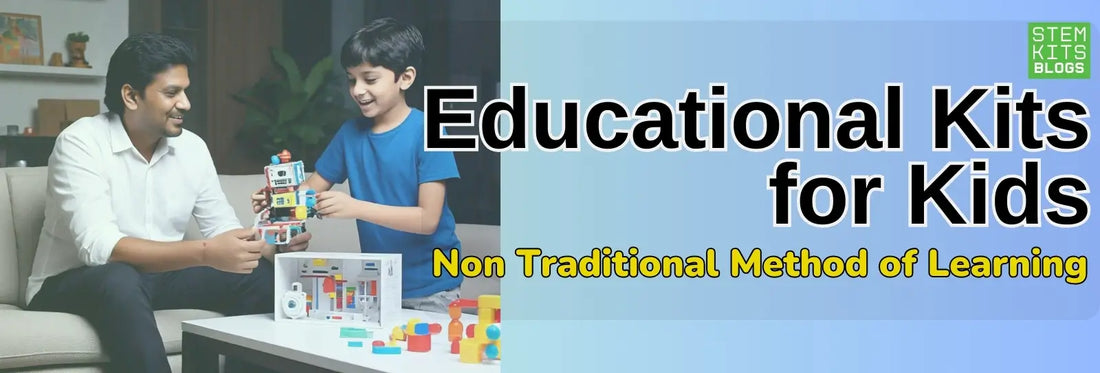
Educational Kits for Kids: Non Traditional Method of Learning
IEM RoboticsTable of Content
- What are Non-traditional Learning Methods?
- Benefits of Non-traditional Learning Methods
- Popular Types of Educational Kits for Kids
- Role of Technology in Modern Learning Toys
- Conclusion
Education in the 21st century is evolving far beyond the traditional classroom. Today, kids can learn creatively engaging ways to meet their intellectual and emotional needs. Non-traditional learning methods, like educational kits, offer hands-on, experiential approaches that spark curiosity and inspire a lifelong love of discovery.
These innovative methods recognize that every child learns differently. From educational kits for kids and building sets to art-based learning tools, these approaches meet kids where they are, helping them grow into well-rounded, curious individuals ready to take on an ever-changing world.
But what makes these methods so impactful? How can parents use tools like educational toys to make learning fun and effective for all kids, including boys and girls? In this article, we’ll explore the role of nontraditional learning methods, their benefits, and how they shape the future of education. Let’s see how these innovations empower kids for success!
What are Non-traditional Learning Methods?
With education evolving, nontraditional learning methods offer more flexible, hands-on approaches than traditional teaching styles. These methods involve active participation, real-world experiences, and tailoring learning to each child’s unique needs.
Instead of relying on lectures, textbooks, and memorization, non-traditional approaches inspire creativity and critical thinking by immersing kids in exploration and problem-solving. Imagine children engaging with real-life scenarios and activities to understand and apply concepts practically.
This shift involves tools like educational kits for kids, learning toys, and interactive platforms. These aren’t just fun—they’re transformative. For instance, a STEM kit can teach kids to build a model, helping them develop fine motor skills, logical reasoning, and a knack for hands-on problem-solving. What’s excellent about non-traditional learning is its inclusiveness. Whether your child is a visual, auditory, or kinesthetic learner, these methods adapt to their style, focusing on active engagement rather than passive absorption.
By making education more dynamic and meaningful, non-traditional learning is reshaping how children of all abilities and backgrounds connect with ideas—and setting them up to thrive in a fast-changing world.
Benefits of Non-traditional Learning Methods
Non-traditional kids learning toys educational evolution focuses on kits for children and learning toys that combine education and play. These are different from the traditional teaching tools most people have experience with, allowing the child to interact and engage in findings based on science, technology, engineering, art, and mathematics (STEAM). Besides making learning fun, such methods further enhance critical thinking and problem-solving abilities and improve creativity in trainees' heads.
● Improving Cognitive Development with Non-traditional Learning Methods
Educational kits usually contain games like puzzles, building blocks, and science experiments challenging kids' minds through problem-solving activities. These activities develop cognitive skills, as children use logical reasoning, recognize patterns, and make decisions during these games. For example, while trying to assemble a puzzle, spatial awareness develops, while performing a science experiment introduces critical thinking by helping the children to hypothesize and test outcomes. These activities develop foundational and advanced cognitive abilities essential for lifelong learning.
● Non-traditional Learning Methods Rise Creativity and Innovativeness
Non-traditional kids learning toys like arts and crafts kits encourage creativity in children. Through painting, sculpting, or other forms of crafting, kids learn to express their imagination and create unique products. It also teaches innovation because children experiment with new ideas, design original products, and find alternative solutions to problems. For instance, a craft project that requires building a functional object from recycled materials fosters productivity and creativity.
● Advancement of Hands-On Learning
Unlike rote memorization, hands-on learning allows children to interact directly with materials, making abstract concepts easy to understand. Tools like robotics kits and DIY science projects allow for experiential learning, where children can build, experiment, and observe results firsthand. This method transforms learning into an interactive process, helping children grasp complicated ideas like engineering principles or chemical reactions in a fun and engaging way.
● Non-traditional Learning Build Emotional Intelligence
Many alternative learning products encourage interactive play that helps children develop empathy, teamwork, and communication skills. Role-playing games help children imagine themselves in other people's shoes and understand their feelings and social relationships. Collaborative toys, such as building sets and other group activities, focus more on cooperation and teach children the value of working together to achieve a goal. These experiences form emotional intelligence, crucial for building good relations and success in other social environments.
● Developing Gross and Fine Motor Skills
Playing with small components of a building kit or assembling scale models enhances fine motor skills by improving hand-eye coordination and precision. Gross motor skills, on the other hand, are developed through activities that involve more significant movements, such as constructing life-sized models or engaging in physical challenges tied to educational play. These motor skill improvements are particularly beneficial for younger children, aiding their overall physical development and preparing them for tasks like writing and drawing.
Popular Types of Educational Kits for Kids
Educational kits are meant to be thought-provoking and imaginative to expand knowledge through practical application. The kits offered accommodate diverse interests and abilities. Children can learn new concepts in an exciting, hands-on way using these kits. Here are some of the most popular types of educational kits for kids that inspire young minds:
1. Science and STEM Kits
STEM kits focus on science, technology, engineering, and mathematics, offering activities that spark curiosity about the natural and technological world. Examples include chemistry sets that teach children about chemical reactions, solar-powered car models that demonstrate principles of renewable energy, and coding kits that introduce the basics of programming. These kits engage children with technical knowledge, fostering a passion for experimentation and discovery while making complex concepts easy and enjoyable.
2. Art and Craft Kits
These kits are ideal for fostering creativity and come with materials for painting, drawing, sculpting, and various other artistic activities. They let kids express themselves through art while developing patience, concentration, and fine motor skills. For example, a sculpting kit may involve creating three-dimensional models that give the child spatial awareness, innovative thinking, and creativity. These kits are recommended for children who like to go on an imagination journey and bring out unique masterpieces.
3. Puzzle and Building Kits
Through puzzles, Lego sets, and other building kits, children are challenged in spatial reasoning, logical thinking, and problem-solving. Assembling a Lego structure requires planning and execution, as well as encouraging critical thinking and perseverance. Puzzle kits take different forms, from jigsaw puzzles that enhance visual-spatial skills to 3D puzzles that introduce the concept of engineering. The kits are excellent for those who enjoy constructing, deconstructing, and figuring out how things work.
4. Robotics and Coding Kits
Contemporary kits aim to immerse children in the thrilling worlds of robotics and programming. Children can build working robots and code their movements with robotics kits while learning automation basics and artificial intelligence. Often, coding kits include games and interactive challenges that teach children to code while solving computational problems. These activities equip the children with future-ready skills and boost their confidence in handling complex technological workloads.
Role of Technology in Modern Learning Toys
Technology has significantly transformed the landscape of modern learning toys, enhancing how children engage, explore, and learn. These kids learning toys entertain and educate by incorporating advanced features and interactive elements, fostering holistic development.
● Interactive Learning Experiences
Modern learning toys integrate cutting-edge technology to design immersive and engaging learning environments. Features such as touch screens, sensors, and voice recognition encourage children to use the device directly for playful purposes, making play a dynamic learning experience. In this regard, educational toys for boys and girls, like intelligent robots or AI-enabled toys, can answer questions, teach new concepts, or guide children in solving problems. These interactive elements help make learning fun and educative, capturing the minds of young learners.
● Personalized Learning
Learning toys with technological advancements adapt to each child's needs and abilities. Many educational kits for kids use adaptive algorithms, where the toy evaluates a child's skill level and changes the learning activity's content or difficulty accordingly. For instance, if a child fails at a math problem, it might simplify the task or give more guidance to help them. On the other hand, it can provide more challenging material for advanced learners. It will ensure the child has an optimal learning curve and will not get frustrated or bored. Personalized feedback will also allow parents and educators to know areas where the child may need special attention to improve the learning process.
● STEM Education Promotion
Many learning toys with technological features aim to stimulate interest in STEM subjects. Examples include coding kits, electronic circuit builders, and augmented reality (AR)- based learning tools, which make foundational scientific and mathematical knowledge more appealing and interactive for young learners. Encouraging children to explore and develop problem-solving skills with hands-on experiments fosters critical thinking, creativity, and a desire for innovation. Such skills are essential for academic achievement and professional life, so STEM-based toys represent an important part of modern education.
● Fostering Social Skills
Unlike the popular conception that technology is isolative, most contemporary educational playthings are built for a more social purpose. Collaborative kids learning toys, such as video games or toys with shared augmented reality experiences, promote teamwork and effective communication among children. Others recreate everyday social situations to train in empathy, emotional intelligence, and conflict resolution. Technology-infused play, therefore, allows a child to play with other valuable social skills and better prepares the child for real-life interaction by creating a well-rounded personal development.
● Challenges and Considerations
Technology integration in learning toys offers significant benefits but also comes with challenges that need serious consideration. Over-reliance on gadgets or extended screen time can impede the child's physical, social, and emotional development. Balancing between traditional and technology-driven play can be an effective way to enhance holistic growth. Parents and educators must carefully select appropriate tools for a child's age and guide them to avoid overstimulation or dependency. While technology has changed educational toys for boys and girls, making learning more interactive and student-centered, it is imperative that these innovations supplement, rather than supplant, foundational skills and traditional learning experiences.
Conclusion
Non-traditional learning methodologies, fueled by technology, such as educational toys for boys and girls and educational kits for kids, are changing childhood education. These methods stimulate children's curiosity, creativity, and critical thinking, preparing them as innovators and leaders for future success. Parents, educators, and policymakers must adapt all these tools to develop the most interactive and practical approach to educating the next generation.

